From the get-go, There are no established prestige classes in DnD 5th edition, and Wizards of the Coast have not approved of it in any form. The closest thing would be epic level boons given to characters at epic levels, around levels 17 to 20.
This means that everything from the end of this paragraph onwards will ultimately be homebrew, so you can choose to take this or modify it as you wish.
You might ask, “Why should I read this if it is not even legal to run in a Wizards of the Coast event?” I respond: If you are running your personalized campaign, this might be something that can spice up your campaign to individualize further and personalize your player character.
Here’s my Prestige Classes 5e guide with my homebrew ideas of Prestige classes, what I think they should be like and what benefits they can give you. Feel free to change it or use it as you wish.
What is a Prestige Class?
Back in the 3rd edition was the birth of this idea. Classes could learn and level into prestige classes if they met specific requirements. Like regular DnD classes, prestige classes have a leveling path that gives abilities and features as you put the experience into them.
They are shorter than regular classes due to their prerequisites but just as if not more powerful.
They are optional and give players access to skills that are usually impossible to acquire. Due to the structure of the 3rd and 3.5 editions, you would create a character and be able to invest points into skills to get specific abilities and proficiencies.
With Prestige Class, you can take those skills and hone them further; if it helps, you can imagine it as another class altogether but with a more precise image in mind.
In the shorter form, here is a summary of what a Prestige Class is.
- Another class to put the experience in
- Has requirements to level into
- Strong abilities and features
- Unique identity
Why is it not in D&D 5e?
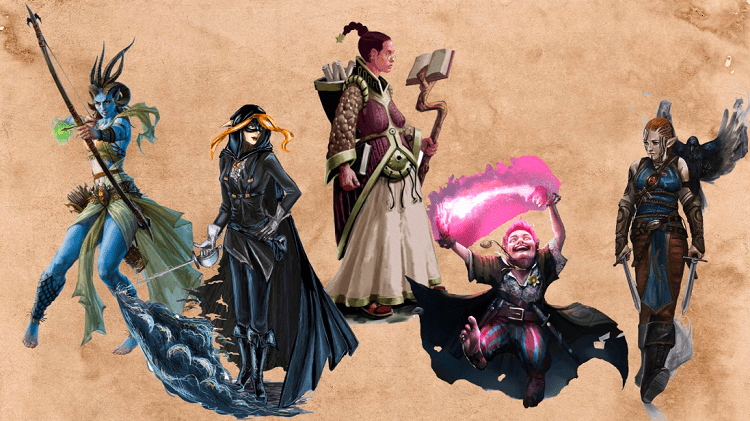
So in the 5th edition, they remade the subclasses to become unique. However, with this, they also have restricted the freedom that comes with skill point investment.
Due to the more streamlined leveling system, you only get options for your subclass and subsequent feats that you learn later on. These ASI could also improve your stats rather than gain feats; however, aside from these methods, there are very few ways to change the character sheet.
Of course, with leveling, you could also use multiclass; however, unlike previous editions, multiclassing no longer has an XP penalty if the gap is too large; additionally, multiclassing is much simpler now with the stat requirements.
This gives you a more comprehensive array of features at the cost of possible health and higher leveled skills. While not necessarily the worst, gaining a prestige class is functionally the same as multiclassing.
They removed this in the 5th edition because they wanted to keep the power balance of the game. Prestige classes are powerful, and the subclasses introduced in this edition answer the power creep problem.
Subclasses have the same mechanical and lore function as prestige classes, wherein you have a broad skill set and specialization within that skill set.
Of course, that does not mean you cannot reintroduce Prestige classes into the 5th edition. I think there are two ways to do this; either you do it similarly to the 4th or 3.5 edition.
This means you allow access to these classes either part of the way through and take from the complete pool of twenty levels a character can have. Alternatively, you could let the players level past twenty and add a few levels to the cap from twenty to twenty-five.
How to Build a Prestige Class?
Since there are two kinds of builds for Prestige classes, I will list down the two methods I use to develop them. There are a few similarities to them; for example, the additional requirements needed to access said unique class and its extra features.
My general rule of thumb here is for five levels in a Prestige class. However, if you look online, they are strict with the prerequisites but generous with the features, which leads to players feeling more accomplished and powerful for pursuing this specific build.
Lastly, each Prestige class must have a theme in mind, whether for an in-combat or out-of-combat purpose.
Pre-level 20
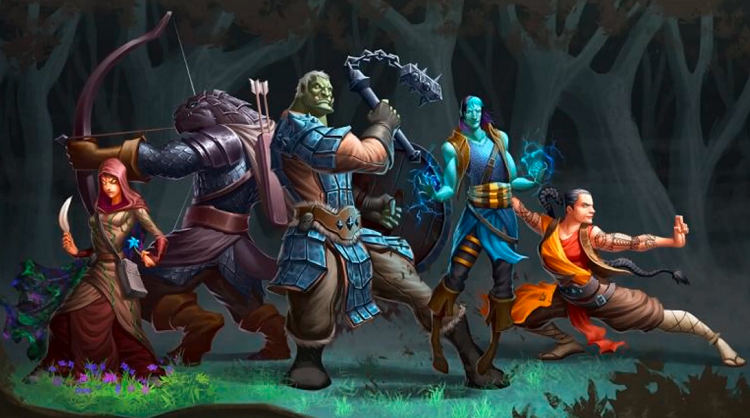
For pre-level 20, I tend to make classes that are either five levels or ten levels in total. Rather than having a capstone skill, it has more powerful abilities overall. I make each level have an ability or feature for classes with five levels and forgo ASI entirely.
The ones with ten levels are closer to standard base classes and, as such, have a few ASI sprinkled here and there and a few levels where they gain no ability but an improvement on spell casting or a previous ability.
I lean towards having ten or fifteen levels in a specific base class for the requirements. An example would be ten levels in Fighter if I wanted to make a class that attacks multiple times. This ensures that the players have time to think out their build as they only get access to it at the campaign’s midpoint.
Another requirement would be feats or proficiency in specific skills. For example, an Archmage would need at least proficiency in Arcana, if not at least the Magic Initiate feat. It could even be multiple skills if you want the barrier for entry to be higher.
Since feats themselves require stats or skills, it is a way to provide a kind of “progression” for players to take up and build towards their ideal character.
Finally, the last requirement, in my opinion, would be a stat requirement to ensure that the character is strong, fast, or smart enough to be in the Prestige class. After all, it would not make sense that a Barbarian could become a Runewright because he took one level in it.
For the abilities and benefits of leveling a Prestige Class. I would give them abilities similar to the base class but stronger or changed in some way.
For example, a Fighter-based Prestige Class could have an ability that gives them a stronger pool of battle maneuvers, or a Wizard Prestige class could have more options to change their magic.
You can make the earlier levels of the prestige class give proficiencies or expertise while the later levels can give active abilities or bonus action skills. Designing them is entirely up to the DM and what kind of theme they have for the class.
Then you add what you get for going into the class that are not features. These will be hit points per level, skill and tool proficiencies, and equipment if they get any.
Post-level 20
These requirements are a little stricter since they have already hit the level cap. I rule that my players are only allowed to have one Prestige class since it would put them over level twenty.
I do not touch their proficiency bonus, as increasing it any further would potentially break the game. I allow them to improve their HP and typically do not include feats into the features and abilities gained from the Prestige class.
For these Prestige classes, I limit them to five levels, no questions asked. However, I allow them access to boons or blessings that let them respec or change Prestige classes. Generally, these Prestige classes are more powerful than the base classes and are rarer to find.
I value the extra levels as it makes the players tankier, and at this epic level, their characters are heroes whose legends will pass on.
I would look towards stats for the prerequisites, needing an 18 or even a 20 on rare occasions. Mix that with having multiple stat requirements, and you are guaranteed to have a character of heroic proportions. Doing this encourages players to plan ahead with their builds and keep an eye out for anything specific they want to try out.
Aside from that, I usually lock these classes behind quests or collect specific lore tidbits hidden worldwide. It acts as a sneak peek at what the class can do and a quest or a goal to set in front of your players. Perhaps they need it to defeat a particular enemy or because the character thinks it is the end of their journey once they achieve it.
Lastly, much like the previous entry, I use feats and proficiencies as checkpoints to attain specific classes. At level 20, there is no other way for them to gain these, so they must have already learned them, or they cannot choose it.
In both cases, It would look something like this:
- “Prestige Class Name”
- Prerequisites
- Hit points per level
- Proficiencies
- Tool Proficiency
- Equipment
| Level | Feature | Resource (if ever) |
| 1st | Feature 1 | Spell slot |
| 2nd | Feature 2 | Battle Maneuver Dice |
| 3rd | Feature 3 | Uses per day |
| 4th | Feature 4 | Special Slots |
| 5th | Feature 5 | Inspiration |
Feature 1
Explanation
Prestige Classes Examples
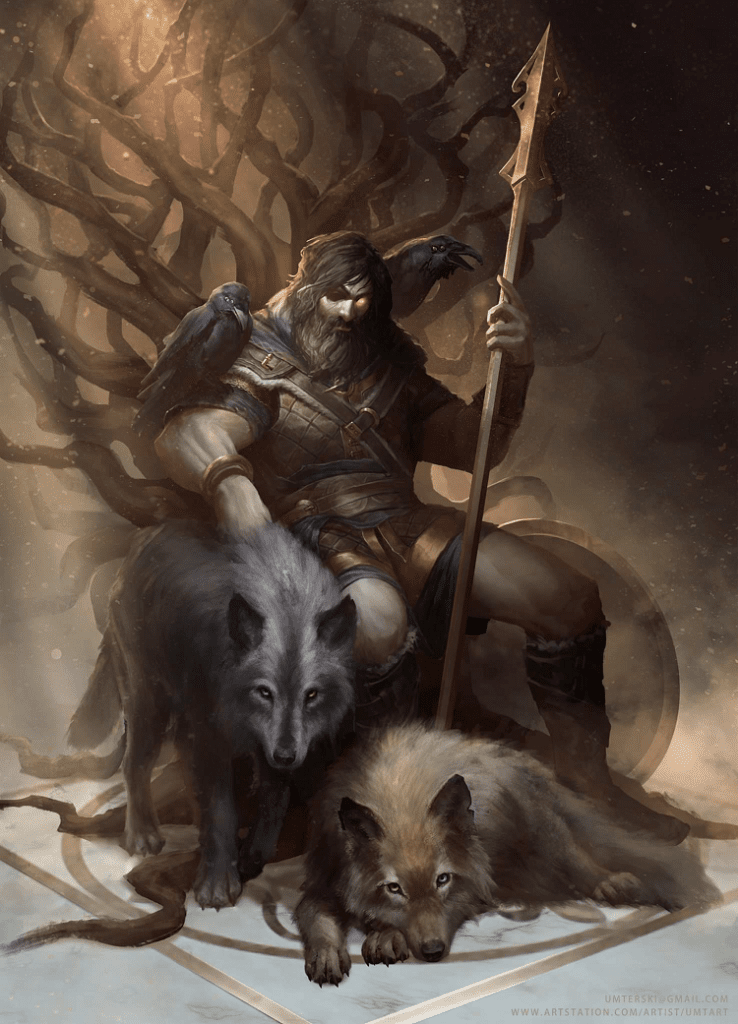
Here are a few examples of Prestige Classes and where I got them.
Rune Scribe (UA)
- Prerequisites: Dexterity 13, Intelligence 13, Proficiency in Arcana, Character Level 5th, Taught by a Rune Scribe.
- Hit points per level: 1d8+ Con
- Proficiencies: None
- Tool Proficiency: Caligrapher’s tools, Mason’s tools, Woodworker’s tools
- Equipment: None
| Level | Features | Spell slot per level |
| 1st | Rune Lore, Rune Magic | 1st level: 2 |
| 2nd | Runic Discovery | 1st level: 3 |
| 3rd | Runic Discovery | 1st level: 4 2nd Level: 2 |
| 4th | Living Rune | 1st level: 4 2nd Level: 3 |
| 5th | Rune Master, Runic Discovery | 1st level: 4 2nd Level: 3 3rd Level: 2 |
Rune Lore
Gain access to the “Complex property” of runes when attuned to them.
Rune Magic
You gain access to spell slots but have no spells known. Instead, you can expend those spell slots to empower certain effects of runes.
Runic Discovery
At the 2nd, 3rd, and 5th levels, you can choose a master rune and attune to it even if you do not own the item.
Living Rune
With every long rest, you can increase an ability score by two or two ability scores by one. Upon taking a long rest, you can reallocate the points spent or choose to keep it in the same stat.
Rune Master
When attuning to runes, you can choose one rune to attune to that does not take up an attunement slot.
Runes
- Opal of Ild Rune
- Orb of Stein Rune
- Pennant of Vind Rune
- Shard of Kalt Rune
Dragon Knight (Mine)
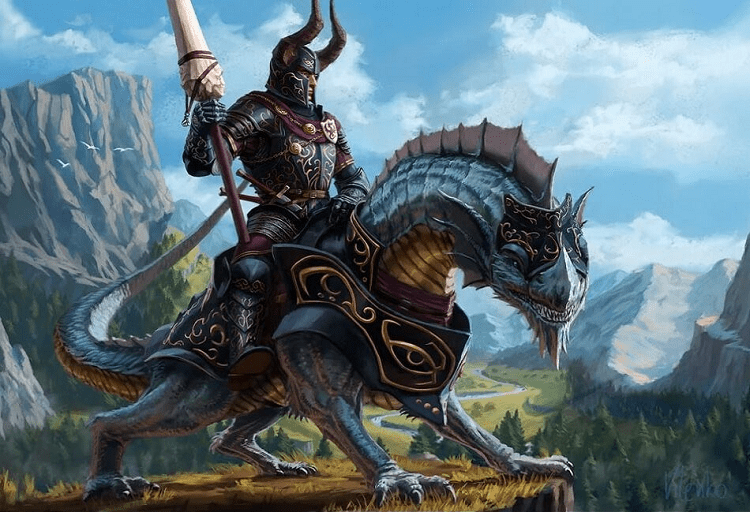
- Prerequisites: Strength 18, Constitution 14, A dragon egg or dragon hatchling, Character level 20.
- Hit points per level: 1d10 +Con per level
- Proficiencies: Draconic Language
- Tool Proficiency: None
- Equipment: None
| Level | Feature |
| 1st | Draconic Companion, Dragon’s Growth |
| 2nd | Dragon’s Wrath |
| 3rd | Dragon’s Growth, Dragon Riding |
| 4th | Lordly Presence |
| 5th | Dragon’s Growth, Heart of Two |
Draconic Companion
You form a bond with your dragon and can communicate with it. The dragon learns one language you understand, and you can speak telepathically with it within 100 feet.
You can command the dragon using an action but cannot use the dragon as a mount. If the dragon is put to zero HP, it makes death-saving throws akin to a player. It can be revived using the same methods to revive a player if it dies.
Dragon’s Growth
Your dragon companion grows to match your power at the 1st, 3rd, and 5th levels. It gains the stat block of a Wyrmling, then Young, then Adult of the same color as your companion. Excluding legendary resistances and legendary actions.
Dragon’s Wrath
When you take the attack action, the dragon can also make a breath attack or a singular attack against the same target.
Dragon Riding
You can consider your dragon a mount, following the mounted combat rules. The dragon, for the moment, is not considered intelligent and must be controlled.
Lordly Presence
As a bonus action, you can command your dragon to perform specific tasks; after hearing a command, it will begin to fulfill it, gaining the initiative in combat after your turn. You can spend another bonus action to give it a new command.
Heart of Two
You and your Draconic Companion share resistances and immunities.
Guardian (DND Unleashed)
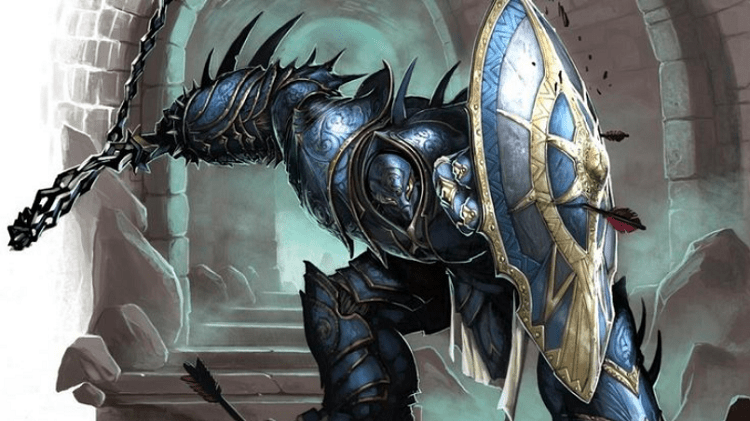
- Prerequisites: Constitution 15, Character level 6th, Extra attack or Shield proficiency
- Hit points per level: 1d10+ Con
- Proficiencies: None
- Tool Proficiency: None
- Equipment: None
| Level | Feature | Resource (if ever) |
| 1st | Guardian’s Calling, Guardian’s Mark | Mark attacks: 2 Ability Marks: 2 |
| 2nd | Protection Speciality, Withstand Pain | Mark attacks: 2 Ability Marks: 3 |
| 3rd | Powerful Reprisal, Unwavering | Mark attacks: 3 Ability Marks: 3 |
| 4th | Ability Score Improvement | Mark attacks: 3 Ability Marks: 4 |
| 5th | Powerful Reprisal, Unyielding | Mark attacks: 4 Ability Marks: 4 |
Guardian’s Calling
Gain a bonus to the damage rolls of any opportunity attacks you make equal to 1+ your Constitution Modifier (Minimum of +1). Additionally, when you make a Charisma check to influence a humanoid that is missing any of its hit points, you gain a bonus to your roll equal to your Constitution modifier (Minimum of +1)
Guardian’s Mark
When you hit a creature with a melee weapon attack, you can mark the creature until the end of your next turn. You can also mark a creature if you hit with a spell, an effect that replicates a spell or channel divinity creature. You cannot mark more than one creature per turn and can only mark a number of times equal to your Ability Marks.
While within your attack range, marked creatures have a disadvantage attacking any target aside from you; additionally, if the creature deals damage to anyone other than you, you can make one melee weapon attack against it using your reaction.
This is considered an opportunity attack and can only be used equally to the number of Mark Attacks you have. Expended uses are regained after a short or long rest.
Protection Speciality
You can choose to learn either Sacrificial Dive or Warding Magic.
Sacrificial dive allows you to take an attack on another creature within 5ft of you, and the attack will then hit you regardless of what was rolled.
Warding magic grants you the spell Shield Other, allowing you to cast Shield on an ally as a reaction.
Withstand Pain
As a bonus action on your turn or as a reaction before you take damage from a creature marked by you, you can gain temporary hit points equal to 1d4+ Guardian level + half your total level.
This lasts for one minute. You can use this ability a number of times equal to your Constitution modifier (minimum of 1) and regain all expended uses on a long rest.
Powerful Reprisal
You can learn two techniques permanently that hone your defensive abilities, and you can change one every time you take a level in Guardian. When a creature within 60 ft of you marked by you makes an attack, you can see against another creature. You can use your reaction to use one of the two abilities you learned.
The abilities are Divine Reprisal, casting your channel divinity against the enemy creature as if using an action or bonus action. Afterward, you regain hit points equal to half your level +twice your Constitution modifier. Furious Reprisal increases your speed by 10 feet and gives you an advantage on melee weapon attacks against the triggering enemy.
These are considered opportunity attacks. You can enter a rage during this effect if you have the Rage class feature. If you are raging and furious when you make a melee weapon attack against the triggering enemy, you can score a critical hit on a 19 and a 20.
Leaping Reprisal lets you jump up to 60 feet away and 20 feet up towards the triggering enemy, then make a melee weapon attack against him with an advantage and a bonus to your damage roll equal to your Constitution modifier (minimum of +1). There are many other Reprisals, but these are the most prominent to me.
Unwavering
Whenever you hit with an opportunity attack and deal damage to the target, you gain an additional bonus to your damage roll equal to your proficiency bonus and regain the use of your reaction.
In addition, when you roll for hit dice at the end of a short rest, you can choose to reroll the die and use the new result instead. You can use this effect up to a number of hit dice equal to your proficiency bonus and regain all expended uses after a long rest.
Cryptlord (5esrd)

- Prerequisites: Intelligence or Wisdom 15, Constitution 13, Proficiency in Arcana or Religion, Spellcaster 5th level, know the Animate Dead spell, Join a Necromantic Order.
- Hit points per level: 1d8+ Constitution
- Proficiencies: None
- Tool Proficiency: None
- Equipment: Spellbook
| Level | Feature | Resource (if ever) |
| 1st | Spellcasting, Undead Familiar | 1st level: 2 |
| 2nd | Undead Master | 1st level: 3 |
| 3rd | Nightmare Horde | 1st level: 4 2nd Level: 2 |
| 4th | Ghastly Form | 1st level: 4 2nd Level: 3 |
| 5th | Become Death | 1st level: 4 2nd Level: 3 3rd Level: 2 |
Undead Familiar
You learn the Find Familiar spell and can cast it as a ritual, and the spell does not count against your number of spells known. You can now conjure from additional forms such as Skeleton, wolf, zombie, or giant poisonous snake.
If your familiar is usually a living creature, it is now undead and against the resistances, immunities, and vulnerabilities of either a zombie or Skeleton. If you take the attack action, you can forgo one of your attacks for your familiar to make an attack using its reaction.
Undead Master
Once per Long rest, you can choose any number of uncontrolled undead creatures you can see within 30 feet of you. They must make a Charisma saving throw against your spell save DC; if it fails the saving throw, it is charmed by you for 24 hours or until you or your companions harm it.
Nightmare Horde
You can cast animate dead with an action, but if you cast it using a whole minute, you are considered to have used a spell slot of one level higher than the one expended for this spell. Additionally, undead created this way gain two additional hit points per hit die.
Ghastly Form
You gain resistance to poison, necrotic damage, and immunity to the poisoned condition. You also gain darkvision up to 60 feet. While unarmored and not wielding a shield, you gain a +1 bonus to your Armor Class.
Become Death
You can undergo a ritual to turn yourself into an undead, requiring 1000Gp and one week. Once finished, you gain the following benefits.
- You are now considered an Undead
- Your Constitution Score increases by two up to a maximum of 22
- You are resistant to cold damage
- You are immune to poison damage
- You cannot be exhausted
- You gain Turn Resistance.
FAQs
Question: What is a Prestige Class 5e?
Answer: Prestige classes are unique classes that further specialize a character. They usually are rarer than the base classes and have a shorter level path.
QUESTION: HOW DO PRESTIGE CLASSES WORK D&D?
Answer: So long as you can meet the requirements to take levels into them, they are just a more specialized and occasionally more powerful version of the base classes.
QUESTION: DOES 5E HAVE PRESTIGE CLASSES?
Answer: Officially, no, they do not. However, wotc did release an unearthed arcana on this topic. Given that unearthed arcana is their way of testing unofficial material before release, this is as legitimate as it gets.
Conclusion
While I am not a fan of putting this in every game, having Prestige Classes occasionally should be acceptable.
This level of power could potentially break the balance of a game, so rather than turning D&D into a pseudo-arms race, I would instead give it as a reward for players and let them fight the world-ending threats that heroes of that level should be able to handle.
In the end, it is entirely homebrew, so if you, as the DM or your DM, do not allow it, that is the end of this story.
- Prestige Classes 5e Guide - September 20, 2022
- Rod of the Pact Keeper 5e Guide - September 15, 2022
- Sanctuary 5e Guide - September 14, 2022

